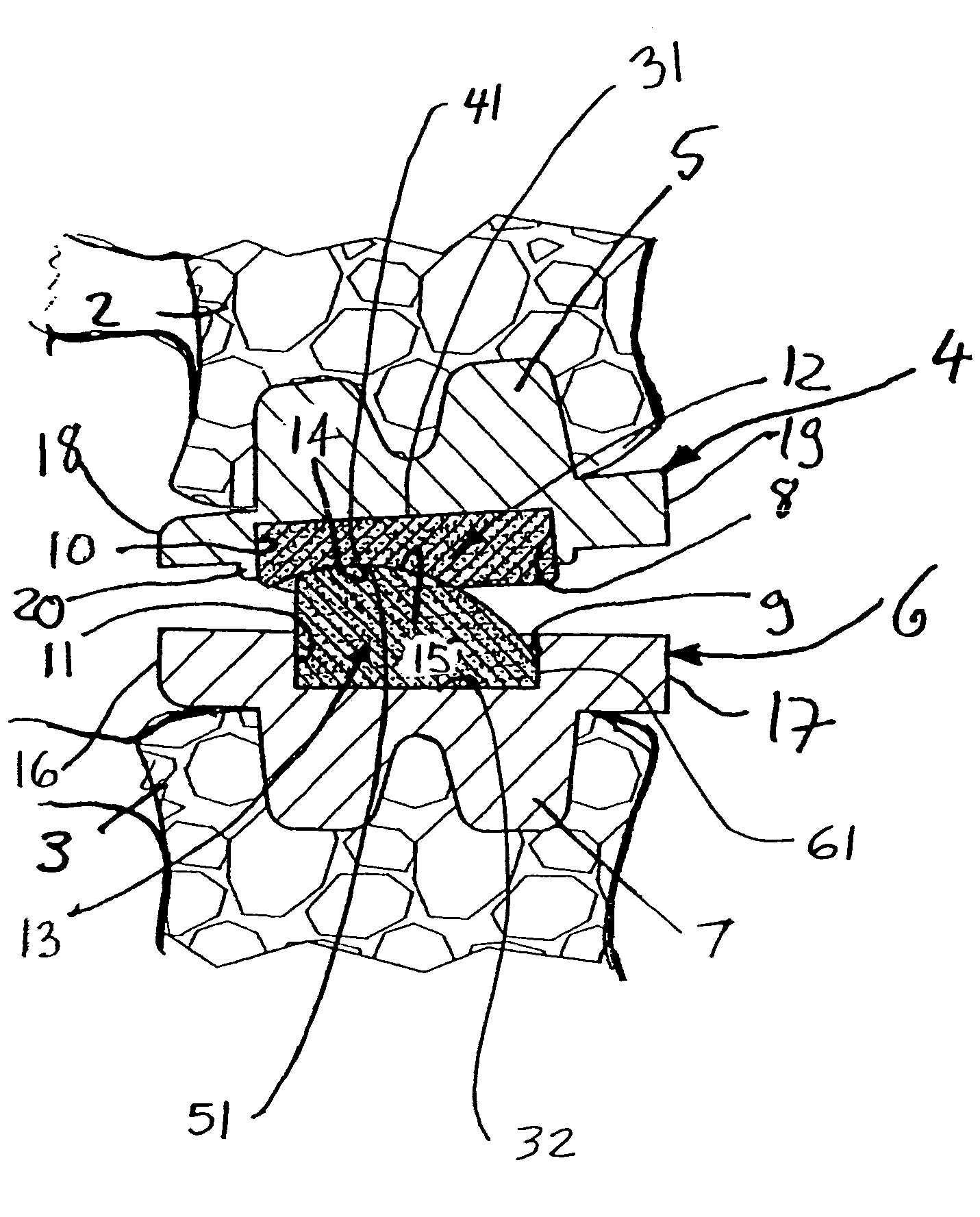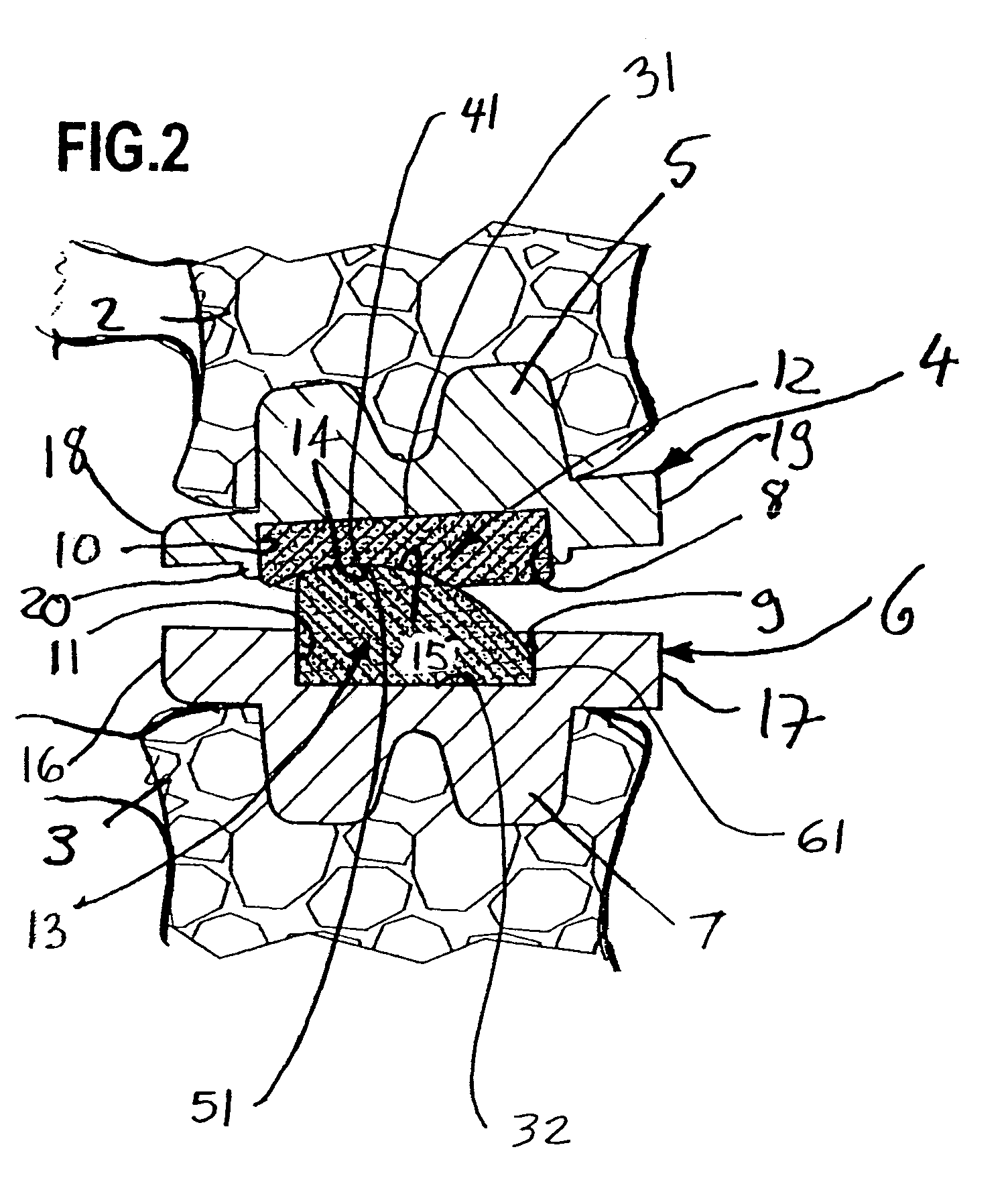Intervertebral implant
a technology of intervertebral implants and implants, which is applied in the field of intervertebral implants, can solve the problems of unfavorable break-in of carrier plates in the dorsal area of the vertebral body
- Summary
- Abstract
- Description
- Claims
- Application Information
AI Technical Summary
Benefits of technology
Problems solved by technology
Method used
Image
Examples
Embodiment Construction
[0022]Although the invention is illustrated and described herein with reference to specific embodiments, the invention is not intended to be limited to the details shown. Rather, various modifications may be made in the details within the scope and range of equivalents of the claims and without departing from the invention.
[0023]The intervertebral implant 1 shown in the figures is used as a replacement for a removed intervertebral disk and is inserted between two vertebral bodies 2, 3. It comprises a first carrier plate 4, which carries rib-shaped projections 5 on its rear side for anchoring in a vertebral body as well as a second carrier plate 6, which likewise carries corresponding projections 7 on its rear side for anchoring in the adjacent vertebral body. The inner sides of the carrier plates 4 and 6, which inner sides face one another, are flat and extend essentially in parallel to one another in the implanted state.
[0024]Both carrier plates 4, 6 have on their inner sides a res...
PUM
 Login to View More
Login to View More Abstract
Description
Claims
Application Information
 Login to View More
Login to View More - R&D
- Intellectual Property
- Life Sciences
- Materials
- Tech Scout
- Unparalleled Data Quality
- Higher Quality Content
- 60% Fewer Hallucinations
Browse by: Latest US Patents, China's latest patents, Technical Efficacy Thesaurus, Application Domain, Technology Topic, Popular Technical Reports.
© 2025 PatSnap. All rights reserved.Legal|Privacy policy|Modern Slavery Act Transparency Statement|Sitemap|About US| Contact US: help@patsnap.com



